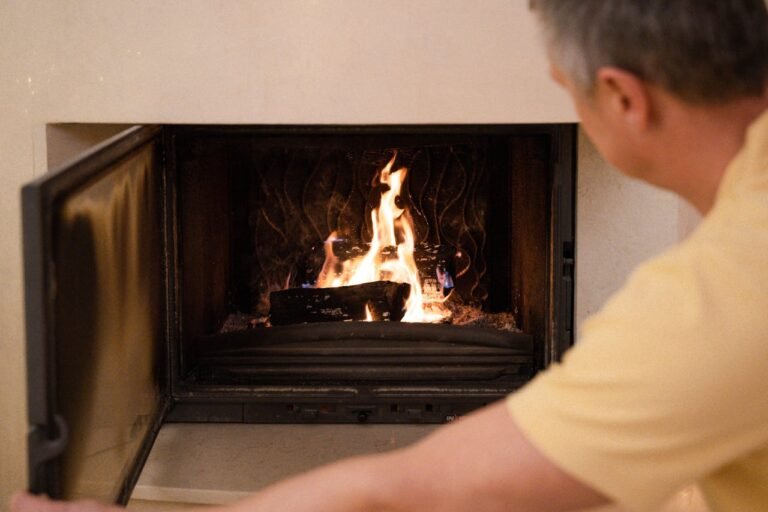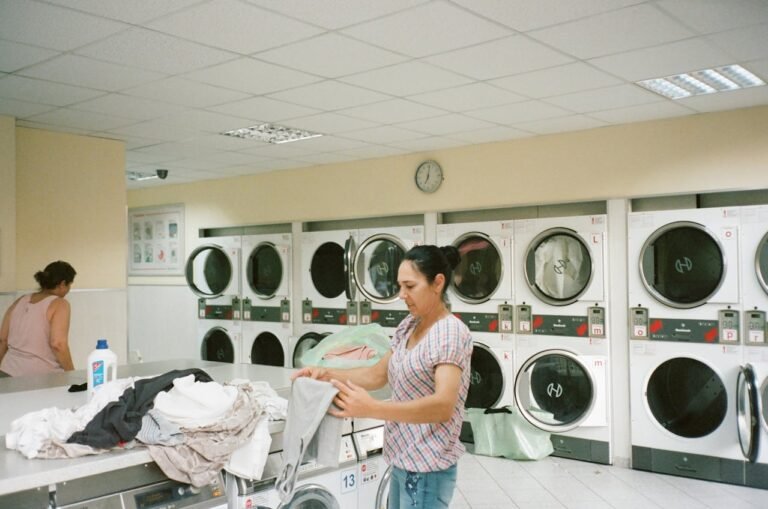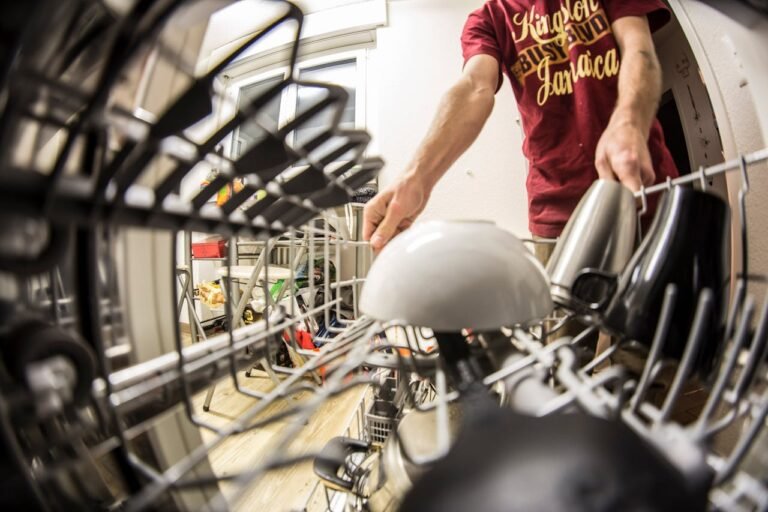Top Eco-Friendly Basement Flooring Options for a Sustainable Home
The basement is often the most overlooked part of the home when it comes to interior design. For years, my own basement was a chaotic mix of laundry machines, cardboard boxes, and an old, clunky water heater. But one day, inspiration struck—why not turn this underutilised space into something more? After all, a basement has so much untapped potential. It could be a warm and inviting living area, a functional home office, or even a sleek entertainment room. As I began my renovation journey, I quickly realised that flooring was the key to transforming this space. But with so many options out there, where should you start?
That’s when I discovered the value of eco-friendly flooring. Choosing sustainable materials doesn’t just benefit the environment; it also enhances the comfort, durability, and health of your home. For instance, cork flooring added a cosy, insulated feel to my space, while bamboo’s natural resilience handled the occasional basement humidity with ease. Through trial and error and plenty of research, I’ve learned that the right flooring choice can make all the difference.
In this guide, I’ll share expert insights, practical tips, and my own experiences to help you navigate the world of eco-friendly basement flooring. Let’s turn your basement into a space you’ll love—sustainably.
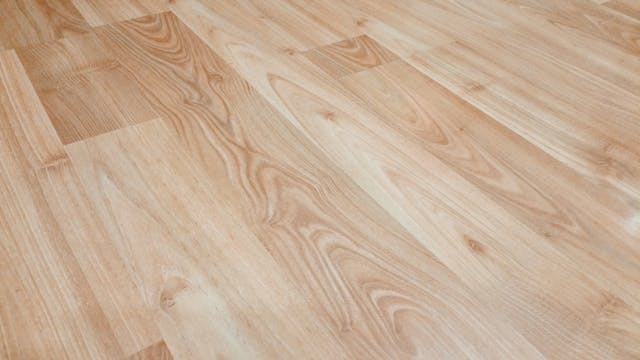
In This Article
- 1. Cork Flooring
- 2. Engineered Hardwood Flooring
- 3. Porcelain Tiles
- 4. Terrazzo Flooring
- 5. Vinyl Plank Flooring
- 6. Bamboo Flooring
- 7. Slate Flooring
Why Eco-Friendly Flooring?
Choosing eco-friendly flooring is more than a trend—it’s a step towards a healthier, more sustainable home. These materials are crafted with minimal environmental impact, using fewer natural resources and emitting fewer harmful chemicals. They can also improve indoor air quality and regulate temperature, reducing energy usage and lowering your carbon footprint.
When we decided to renovate our daylight basement, we chose sustainable flooring for a specific reason: my youngest son’s asthma. Traditional materials often release volatile organic compounds (VOCs) that can exacerbate respiratory issues. By opting for eco-friendly cork flooring, we noticed a dramatic improvement in air quality and a reduction in his symptoms. Plus, the basement became warmer and more inviting, enhancing our family’s comfort.
Experts agree: according to the National Institute of Environmental Health Sciences, improving indoor air quality with low-emission materials can significantly benefit health. Sustainable flooring delivers both peace of mind and lasting value.
Interactive Table: Eco-Friendly Flooring Options at a Glance
| Flooring Type | Durability (1-10) | Moisture Resistance | Cost (per sq. ft.) | Sustainability Rating |
|---|---|---|---|---|
| Cork | 7 | Moderate | $3-$8 | High |
| Engineered Hardwood | 8 | Moderate | $4-$10 | Medium |
| Porcelain Tiles | 9 | High | $2-$10 | High |
| Terrazzo | 10 | High | $10-$15 | High |
| Vinyl Plank | 8 | High | $2-$7 | Medium |
| Bamboo | 8 | High | $3-$10 | High |
| Slate | 10 | High | $4-$15 | High |
Now, let’s delve into each option in detail, sharing practical tips, real-life examples, and expert insights.
Learn More: How to Make Your Home More Sustainable: A Comprehensive Guide
Eco-Friendly Basement Flooring Ideas
1. Cork Flooring
Cork flooring is an exceptional choice for eco-conscious homeowners looking to renovate their basements. Derived from the bark of cork oak trees, cork is a renewable resource harvested without harming the trees. This sustainable material offers a plethora of benefits, including thermal insulation, soundproofing, and durability. Its unique properties make it ideal for creating a comfortable and environmentally friendly basement space.
Why Choose Cork?
Durability and Comfort: Cork flooring is not only durable but also provides a soft, cushioned surface underfoot. When we installed cork flooring in our basement, we immediately noticed how much quieter the house became. The kids’ rambunctious playtime upstairs no longer disrupted our peaceful evenings downstairs. This sound-dampening property makes cork a fantastic option for multi-level homes.
Temperature Regulation: One of cork’s standout features is its natural insulation. During the frigid winter months, our basement stayed noticeably warmer thanks to the cork’s ability to retain heat. In the summer, the flooring helped keep the space cool, making it comfortable year-round.
Installation Tips
- Ensure a Dry Subfloor: Before installing cork, it’s crucial to address any moisture issues in your basement. Use a moisture barrier to prevent damage to the flooring.
- Seal for Longevity: Apply a polyurethane or wax sealant to protect the cork from dampness, especially in areas prone to spills or humidity.
- Choose Click-Lock Tiles: For a DIY-friendly project, opt for click-lock cork tiles. They’re easy to install and can be replaced individually if damaged.
Expert Insight
According to HGTV, “Cork flooring provides excellent cushioning and thermal insulation, making it perfect for basements prone to cold temperatures.”
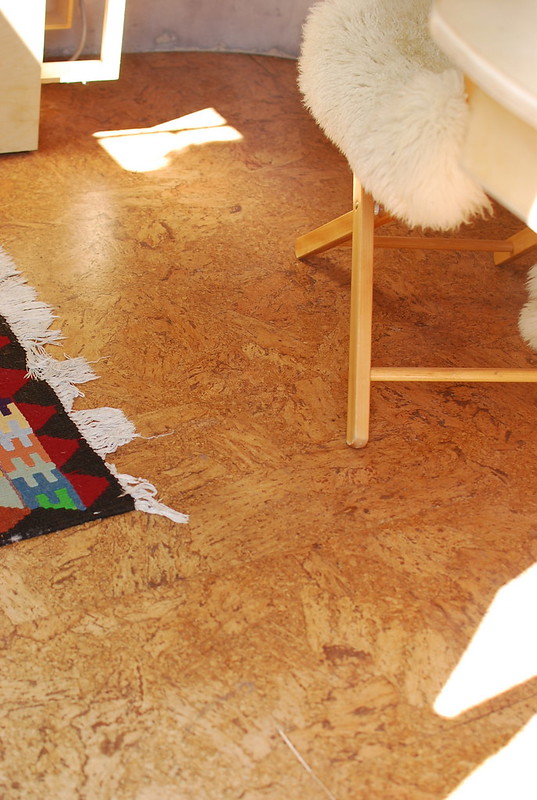
2. Engineered Hardwood Flooring
Traditional hardwood might not be suitable for basements due to its susceptibility to moisture, but engineered hardwood offers a practical and beautiful alternative. Comprising a veneer of real hardwood over a plywood or high-density fiberboard core, this flooring type combines the classic elegance of wood with enhanced durability.
Why Choose Engineered Hardwood?
Eco-Friendly Manufacturing: Unlike solid hardwood, engineered hardwood uses less raw material, which helps reduce deforestation. By choosing this option, you’re contributing to sustainable forestry practices.
Aesthetic Appeal: We chose engineered hardwood in a rich walnut finish to match our upstairs flooring. The seamless transition created a cohesive look throughout the house. Guests often comment on how elegant our basement feels, thanks to this flooring choice.
Installation Tips
- Prepare the Space: Inspect your basement for leaks or high humidity. Installing a dehumidifier can help maintain optimal conditions.
- Opt for Floating Floors: Floating floor systems are ideal for basements as they allow for slight shifts due to temperature or humidity changes without causing damage.
Expert Insight
According to Angie Hicks, co-founder of Angi, “Engineered hardwood is a smart choice for basements, combining beauty and functionality while addressing moisture concerns.”
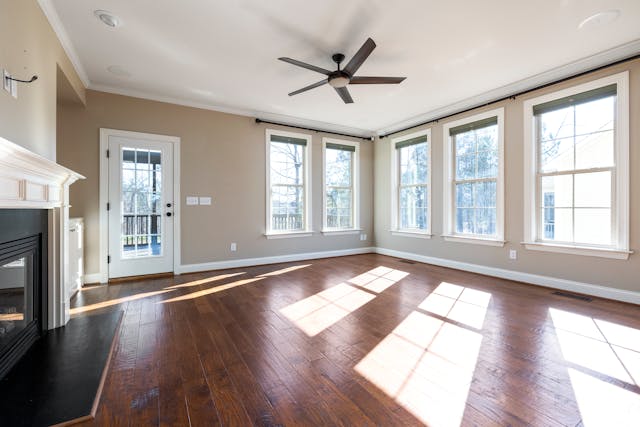
3. Porcelain Tiles
Porcelain tiles are a versatile and eco-friendly option for basement flooring. Made from natural clay and fired at high temperatures, these tiles are incredibly durable and resistant to moisture—a key consideration for below-ground spaces.
Why Choose Porcelain?
Durability: Porcelain tiles resist scratches, stains, and water damage, making them perfect for high-traffic areas. We installed these tiles in our basement’s laundry area, and they’ve held up beautifully against spills and heavy appliances.
Energy Efficiency: Their thermal mass allows porcelain tiles to retain and slowly release heat, which has helped lower our energy bills during the winter months.
Installation Tips
- Use Moisture-Resistant Grout: Prevent water seepage by selecting a high-quality, moisture-resistant grout.
- Pair with Underfloor Heating: For added comfort, consider installing an underfloor heating system beneath the tiles. This has made our basement extra cosy in colder seasons.
Expert Insight
Interior designer Sarah Richardson states, “Porcelain tiles are not only durable but also incredibly versatile, with options that mimic wood, stone, or concrete.”
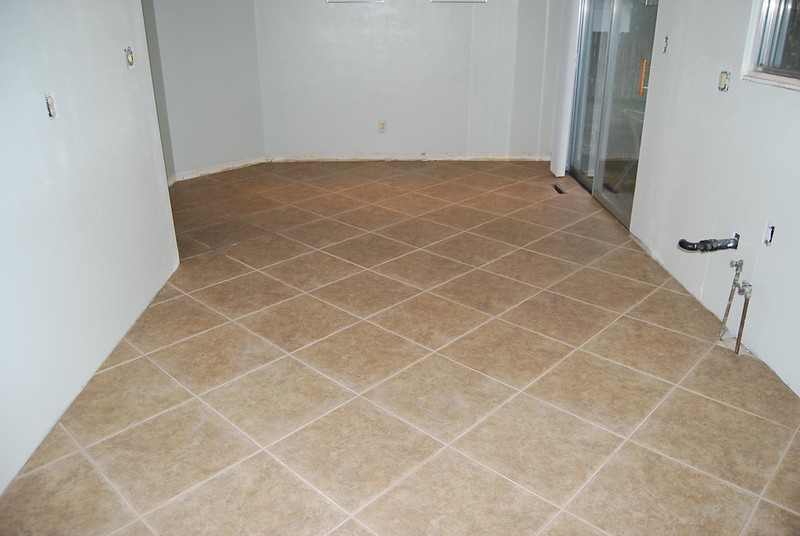
Learn More: Eco-Friendly Heating Options: 10 Sustainable Ways to Heat Your Home
4. Terrazzo Flooring
Terrazzo is a timeless flooring option known for its unique blend of style, durability, and sustainability. Made from a mix of marble, quartz, granite, glass, and shells set in cement or resin, terrazzo is one of the most eco-friendly materials available.
Why Choose Terrazzo?
Sustainability: Terrazzo incorporates recycled materials, making it one of the greenest flooring options on the market. Its long lifespan also reduces the need for replacements, minimising waste.
Longevity: With proper care, terrazzo can last for decades. We installed terrazzo in our basement’s entrance area, and its polished surface has remained flawless despite heavy foot traffic.
Installation Tips
- Hire a Professional: Pouring and polishing terrazzo requires expertise. A professional installation ensures a seamless and durable finish.
- Seal Regularly: Protect the surface from stains and moisture by applying a sealant periodically.
Personal Story
After installing terrazzo, we’ve received countless compliments from visitors. The subtle flecks of recycled glass embedded in the flooring catch the light beautifully, adding a modern touch to our space.
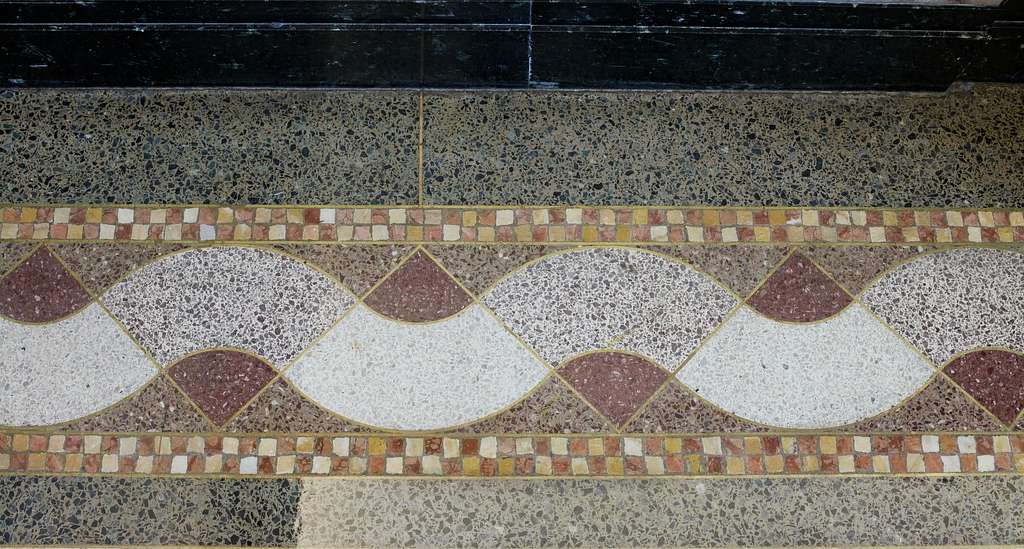
5. Vinyl Plank Flooring
Modern vinyl plank flooring has undergone a transformation, offering stylish designs and sustainable options. Made from recycled materials and featuring low-VOC finishes, vinyl planks are a practical choice for homeowners seeking affordability and durability.
Why Choose Vinyl Plank?
Affordability: Vinyl plank flooring provides a high-end look without breaking the bank. When we were on a tight budget for our basement renovation, vinyl planks allowed us to achieve a sophisticated aesthetic at a fraction of the cost.
Durability: Vinyl planks are resistant to moisture, scratches, and stains, making them ideal for basements prone to spills or heavy use.
Installation Tips
- Prepare the Subfloor: Ensure the surface is clean, dry, and smooth before installation.
- Choose Peel-and-Stick Tiles: For an easy DIY project, opt for peel-and-stick vinyl tiles. They’re simple to install and replace if needed.
Expert Insight
Angie Hicks notes, “Vinyl plank flooring offers the perfect combination of durability, variety, and affordability for homeowners.”
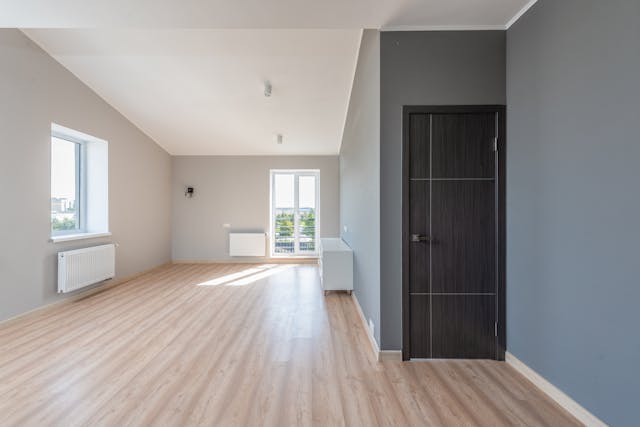
Learn More: 10 Eco-Friendly Appliances You Need in Your Home
6. Bamboo Flooring
Bamboo is a fast-growing, renewable resource that has become increasingly popular for sustainable living. Its durability and natural beauty make it an excellent choice for basement flooring.
Why Choose Bamboo?
Moisture Resistance: Bamboo is naturally resistant to shrinking and swelling, making it well-suited for high-moisture environments like basements. We chose strand-woven bamboo for our basement gym, and it’s held up impressively under heavy equipment.
Eco-Friendly: Bamboo’s rapid growth and renewability make it one of the most sustainable flooring options available.
Installation Tips
Apply a Water-Resistant Finish: Protect against spills and moisture by sealing the surface.
Opt for Strand-Woven Bamboo: This variety is denser and more durable, perfect for high-traffic or high-moisture areas.
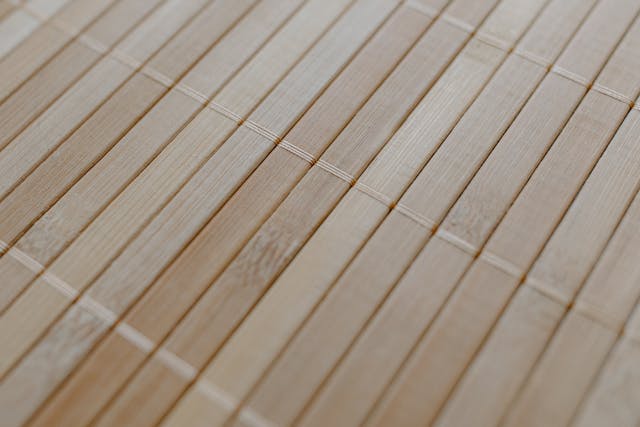
7. Slate Flooring
Slate is a natural stone known for its strength, durability, and timeless aesthetic. While it’s a more expensive option, its longevity and classic appeal make it a worthwhile investment.
Why Choose Slate?
Strength: Slate is resistant to scratches, cracks, and chips, making it perfect for high-traffic areas. Our basement’s playroom features slate flooring, and it has withstood years of wear and tear without showing signs of damage.
Sustainability: Mined from natural sources, slate is fully recyclable, making it an eco-friendly option.
Installation Tips
- Hire a Professional: Proper levelling and sealing are essential for a durable installation.
- Maintain Regularly: Clean with mild detergents and reseal periodically to preserve its natural beauty.
Expert Insight
Interior designer Belinda Pabian recommends slate for basements, stating, “Its natural warmth and durability make it a perfect choice for cosy yet functional spaces.”
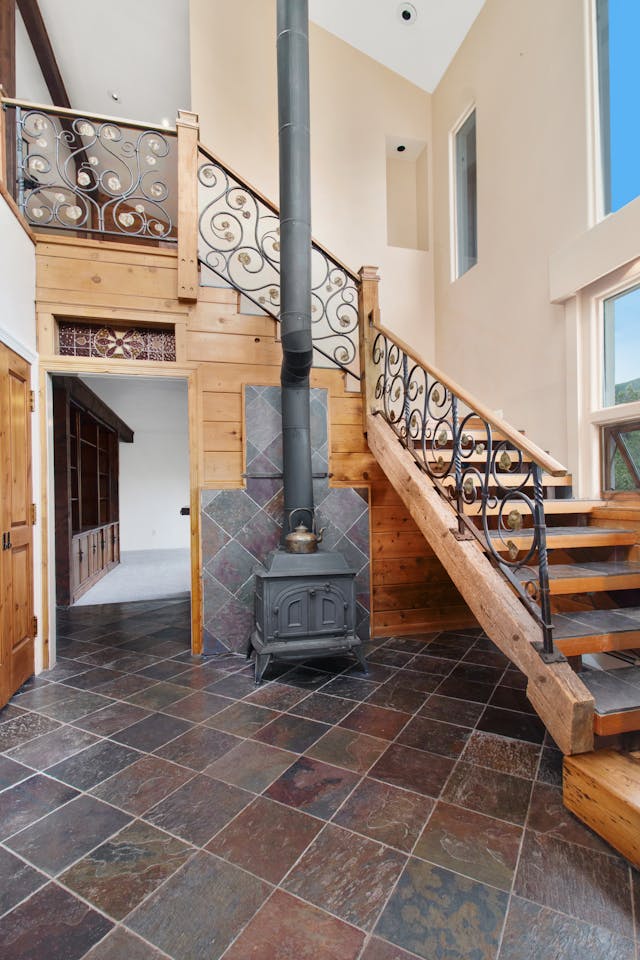
Conclusion:
Choosing eco-friendly basement flooring isn’t just about reducing your environmental impact; it’s about creating a healthier, more comfortable home for your family. Whether you opt for cork, bamboo, terrazzo, or porcelain tiles, consider your basement’s unique needs and your budget. With the right flooring, your basement can go from an overlooked utility area to a vibrant, sustainable part of your home.
We’d love to hear about your experiences! Have you tried any of these flooring options? Share your story in the comments below.

